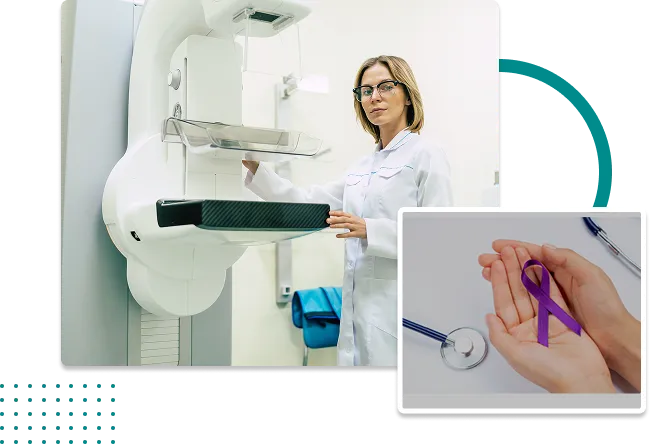- Email: [email protected]
- Contact: +1 (407)581-9000
Cancer Screening
CancerGuru
Screening


Why Cancer Screening?
Cancer screening is a cornerstone of early detection, offering a proactive approach to reducing mortality, a key focus for our community. Screening is defined as the use of tests to identify cancer or precancerous conditions in individuals without symptoms, aiming to catch the disease at its most treatable stage. For our users, understanding screening’s role and guidelines is critical to taking charge of their health.

Types of Cancer Screening
Effective coping with cancer begins with early detection, a cornerstone of reducing its physical and emotional burdens. Screening tests, tailored to specific cancer types, enable timely intervention, significantly improving outcomes and easing the coping process. At CancerGuru.com, we outline key screening methods, informed by the American Cancer Society (ACS), National Cancer Institute (NCI), and U.S. Preventive Services Task Force (USPSTF) guidelines, empowering patients with knowledge to navigate their health proactively.
Mammography remains the gold standard for breast cancer screening. The ACS recommends annual mammograms for women aged 45 to 54, transitioning to biennial screenings thereafter, detecting approximately 85% of cases at an early, treatable stage (ACS, 2023). A 2024 update notes that 3D mammography enhances accuracy by 15% in dense breast tissue, reducing false positives and subsequent distress (NCI, 2024). For example, a 47-year-old woman might schedule yearly scans, catching a Stage I tumor before symptoms arise, simplifying treatment and recovery. Women with family history may begin earlier, per physician guidance, reinforcing coping through preparedness.
Colonoscopy is pivotal for colorectal cancer screening, advised by the USPSTF to start at age 45 for average-risk individuals. This procedure, performed every 10 years if normal, identifies and removes precancerous polyps, reducing mortality by 68% when detected early (ACS, 2023). A 50-year-old undergoing their first colonoscopy might have an adenoma excised, averting cancer entirely. The NCI highlights that advancements in sedation and prep regimens improve patient comfort, encouraging adherence and minimizing the physical toll of delayed diagnosis.
Low-dose computed tomography (LDCT) targets lung cancer in high-risk populations—current or former heavy smokers aged 50-80 with a 20 pack-year history. The ACS reports that annual LDCT scans cut lung cancer deaths by 20% in eligible groups, identifying nodules before symptoms emerge (ACS, 2023). A 60-year-old ex-smoker, for instance, might detect a small lesion via LDCT, enabling surgery over extensive chemotherapy. The USPSTF reaffirms this screening’s efficacy, supporting coping by offering a manageable treatment path.
Additional screenings broaden early detection’s scope. Pap smears, combined with HPV testing, screen for cervical cancer, recommended every 3-5 years for women aged 21-65 (USPSTF, 2025). This duo catches 90% of cases early, often pre-cancerous, as with a 35-year-old whose abnormal cells are treated outpatient. Prostate-specific antigen (PSA) testing aids prostate cancer detection in men over 50, with a 2024 ACS study noting a 25% mortality drop when paired with informed decision-making (ACS, 2024). A 55-year-old man might opt for annual PSA checks, catching cancer before it spreads.


Benefits of Screening
The impact of screening is profound. In 2023, as per cancer research, early detection through screening contributed to a 33% drop in cancer mortality since 1991, with over 3 million deaths prevented. However, adherence varies—only 72% of eligible women received mammograms in 2021, highlighting gaps we can address with education. Screening also carries considerations; false positives may lead to unnecessary tests, though the benefits outweigh risks for high-risk populations.

Guidelines for Screening
Guidelines adapt to age and risk. Men over 50 are urged to discuss PSA tests for prostate cancer, while HPV testing complements Pap smears for cervical cancer in women aged 30-65. We detail these recommendations, emphasizing that early-stage cancers, like Stage I breast cancer with a 99% 5-year survival rate, are far more manageable than advanced cases at 31% (American Cancer Society, Cancer Facts & Figures 2023). By leveraging our insights, we equip users with the knowledge to pursue regular screenings, fostering prevention and early intervention as vital steps in cancer care.

